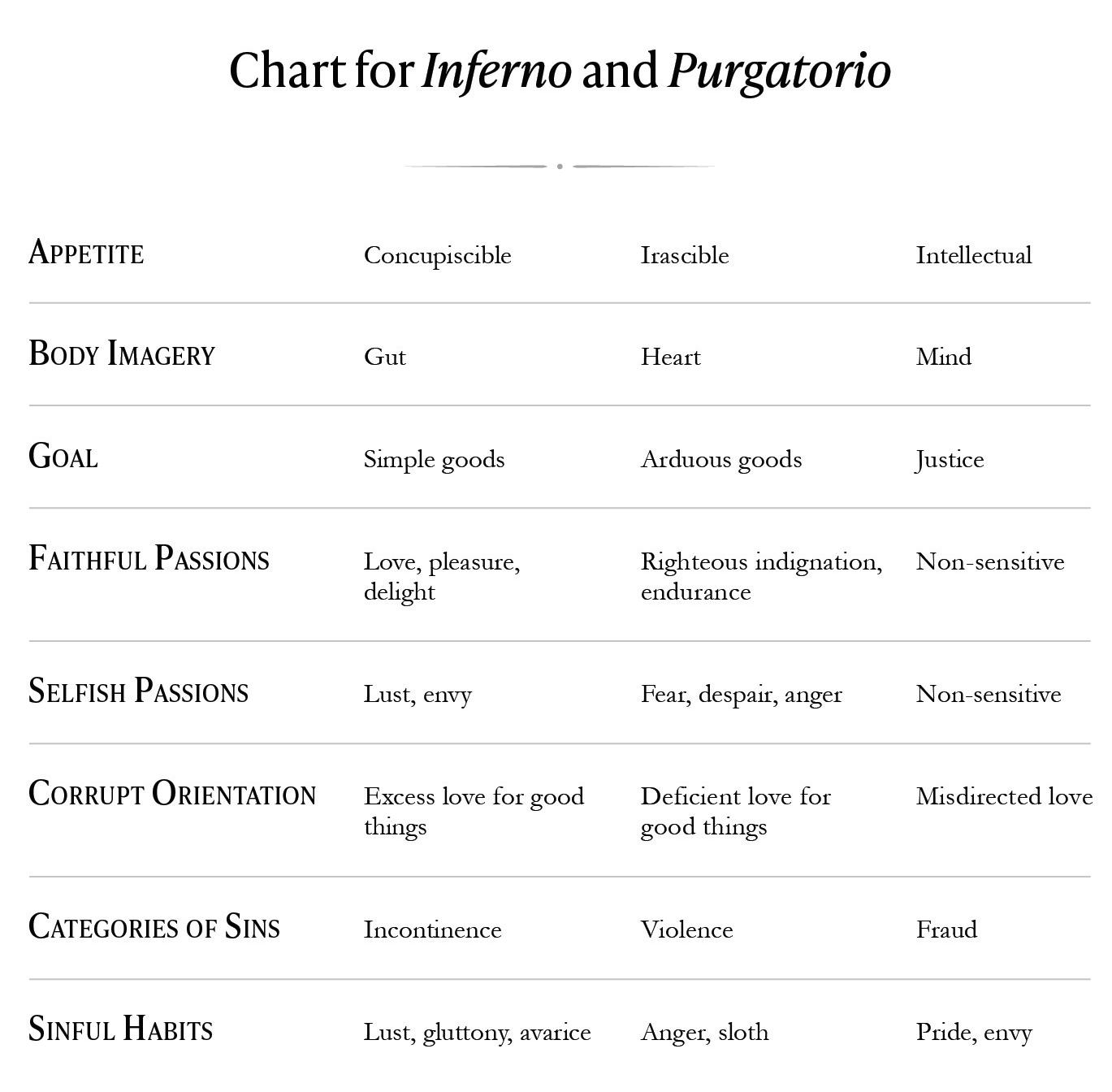
2 minute read
INFERNO
READER’S GUIDE
Canto I
Advertisement
The Dark Wood
Characters
⸭ Dante, the lost pilgrim
⸭ Virgil, the guide
⸭ Three beasts: Leopard, Lion, She-Wolf
Location
⸭ A Dark Wood, the Foot of the Mountain of Delight
Summary
It is dawn, Good Friday, 1300. A pilgrim awakes from a stupor to find himself in a dark, dangerous, and savage wood—on the edge of death itself. At the end of a dark valley he finds a steep mountain, robed in the light of the sun. He tries to climb it, somehow knowing that if he can make it to the top, he will be saved. But he is blocked—first by a leopard, then by a lion, and finally by a she-wolf, traditionally interpreted respectively as lust, pride, and avarice (see Jeremiah 5:6). He is forced back into the darkness of the savage wood. At that moment a figure appears to him at a distance. Dante calls out to him and begs his assistance. It is the shade of Virgil, come for the purpose of helping Dante out of the wood and past the three beasts. To do this he must follow Virgil down through Hell and up Mount Purgatory. After this, if he wishes to complete the journey to Heaven, another must take over and guide the pilgrim through the sacred spheres to the presence of God. Dante is grateful and accepts the journey.
Notes
⸭ “In the middle of the course of our life” ; Dante is 35 years old, 35 being half of 70, 70 being the biblical age of man (“three score years and ten” from Psalm 90:10). Dante was born in 1265, which is how we are able to place the fictional date of this poem at 1300.
⸭ “robed, by then, in the rays of the planet” : In medieval cosmology, the sun was the fourth planet in the heavens, following the Moon, Mercury, and Venus. After the sun came Mars, Jupiter, Saturn, and the Fixed Stars. Finally, the ninth sphere was the Crystalline Sphere, or the primum mobile. Outside that utter limit of the physical universe was the Empyrean Heaven, which was the presence of God Himself.
⸭ The three beasts have also been interpreted as incontinence (wolf), violence (lion), and fraud (leopard); this matches the three distinct sections of Hell. The reason to align the leopard with fraud is this: when the pilgrim meets Geryon for the first time (Canto XVI), he mentions the belt he had used to fend off the leopard. However, the wolf-as-incontinence notion is contradicted in Purgatorio XX, where the shewolf is clearly linked with avarice. Another scheme would be envy (leopard), pride (lion), and avarice (wolf), as these are the three vices (or “sparks”) listed by Ciacco in Canto VI as setting aflame the hearts of everyone in Florence.
⸭ The son of Anchises is Aeneas, and the song in which he is sung is the Aeneid .
⸭ The greyhound is a fascinating figure. While there is no clear indication within the text who it is, there seems to be both a near and far fulfillment in mind. Soon, Dante hopes, there will be a political or military figure that would come and bring peace and righteousness back to the kingdom of Florence, and the other kingdoms within Italy, from “Feltro to Feltro” referring, possibly, to a region in the north and one in the south. The far fulfillment is, almost certainly, the second coming of Christ, pictured as the ultimate Greyhound.
⸭ Virgil is allowed to guide Dante through Hell and through Purgatory, but not beyond. Beatrice will meet the pilgrim at the top of Mount Purgatory and take over as Dante’s guide. Virgil, on account of his virtue, is able to enter Eden, a picture of man at his created best, but not further because man at his best is still not enough. He must also be buried with Christ in baptism, and raised with Him to newness of life. This lack of baptized faith in Virgil is what prohibits him from guiding others to the Emperor’s city.





